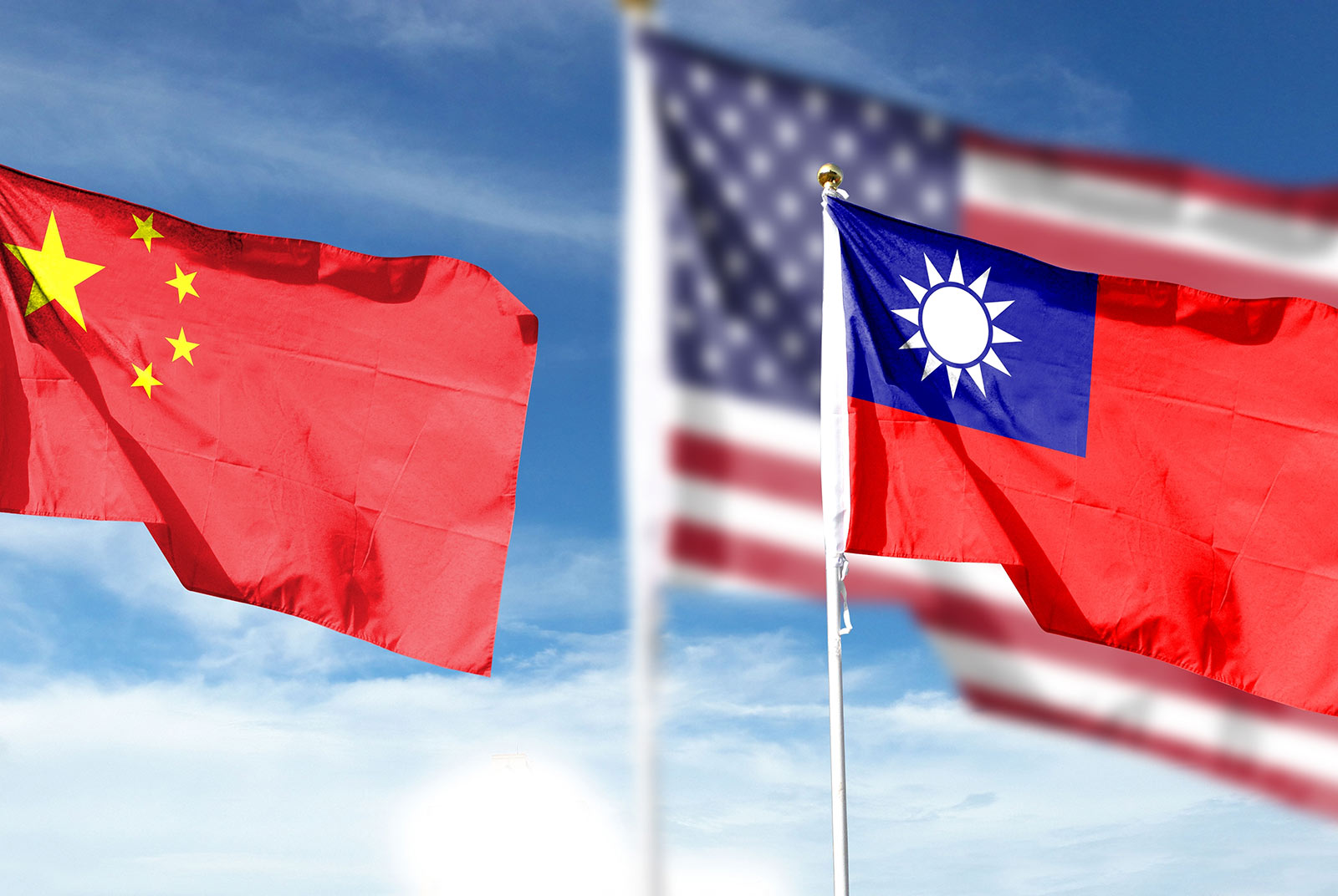‘An influx of 100,000 Indian workers to Taiwan’- What is scarier: numbers or the nation?

Source:shutterstock
In this op-ed, Arpita Dutta delves into the complex landscape of India-Taiwan relations amidst the proposed introduction of approximately 100,000 Indian migrant workers into Taiwan's industries. From the initiative, multifaceted concerns arose, ranging from anxieties among Taiwanese regarding stagnant wages and gender perspectives to the potential disruption in production due to labor shortages.
Views
‘An influx of 100,000 Indian workers to Taiwan’- What is scarier: numbers or the nation?
By Arpita Duttaweb only
As we know, diplomatic jargons such as “enhanced friendships”, “improved trading”, and “stronger partnerships” are often employed in efforts to bring two countries closer, but a genuinely close and reciprocal relationship would have its foundation built on common and deeply rooted mutual values. India-Taiwan friendship is now undergoing intense tests in the face of a government's proclamation of introducing approximately 100,000 Indian migrant workers to Taiwan industries.
The proclamation has sparked anxieties among the Taiwanese population at large, leading a part of the population to protest against stagnant wages and raise concerns regarding women's safety due to significant divergences in gender perspectives between India and Taiwan. Indian individuals are being labeled rapists, molesters or smeared with other inappropriate adjectives. However, this stereotypical thinking contradicts their true identity in Taiwan.
The Taiwan International Workers Association (TIWA) expressed its support for migrant workers by emphasizing the importance of implementing "equal pay and equal rights for equal work”. Now the biggest question lies in production disruption because of labor shortage among Taiwanese industries.
It is a well-known fact that a shrinking workforce would cripple economic development. Therefore, there remains an utmost urgency to have this labor force from any manpower-based countries. Otherwise, how could this labor dearth be solved? If finally, India-Taiwan signs such an agreement, can this migration mobility truly generate a substantial impact under the current situation?
As I advocated in my earlier opinion in CommonWealth Magazine that we know there is a significant demand for Indian talents worldwide. The recent Indian migration mobility pacts with countries worldwide underscore the significance of the Indian talent pool, showcasing their expertise on a global scale. Indian CEOs account for 30% among well-known US companies, such as Google, Twitter, and Microsoft, further proving India’s excellent and abundant talent resources. This shows an early stance for an India labor agreement has some successful impact around the world.
India has been signing various forms of agreements, such as Labor Manpower Agreements (LMA), primarily with the Gulf Cooperation Council (GCC) countries and Jordan. In addition, there are Migration and Mobility Partnership Agreements (MMPAs) that encompass a broader scope, facilitating short-stay visas, mobility for students, researchers, professionals seeking economic opportunities, and initiatives to prevent irregular migration and human trafficking. India has established MMPAs with several nations, including France, the UK, and Germany. Furthermore, India is initiating negotiations on Migration and Mobility through the signing of Letters of Intent (LoI) or Declarations of Intent (DoI) with countries like Denmark, Finland, Italy, Portugal, Cyprus, Greece, Germany, Austria, and Australia.
According to statistics, the influx of Indian immigrants to the EU has remained steady over the past 25 years, constituting approximately 7.9% of the EU's overall population. Over this period, the UK has consistently been the preferred destination for Indians migrating to the EU.
In addition to the EU, Japan has almost 50,000 Indians residing there.
It might be the first time that Indian migrant workers experienced such a negative response worldwide. The data suggests that Taiwanese concerns about the Indian population might not be as conclusive as presumed by some locals in Taiwan.
It appears that a part of the Taiwanese population continues to form opinions about India by engaging with Indian/other news media outlets. However, it is crucial to truly comprehend the fact that according to global statistics, India has a comparatively lower rate of reported rape victims (nonetheless, this statement does not in any way minimize the significance of any individual case of rape in India).
Therefore, this is a moment that demands patience and significant efforts to prepare the population for any forthcoming changes, and real issues should be put into the microscope:
-
How could cultural acceptance be enhanced? This is the crucial discussion that Taiwan should plan for today. Before accumulating a larger number of people, a fundamental framework showcasing India-Taiwan mutual understanding is important. India's affinity for Taiwan could greatly enhance the connection. Therefore, a comprehensive plan might work well.
-
Taiwan vows to become a bilingual country, but the education system remains conservative, and English education is expensive for the working-class population.
-
Furthermore, there is a shortage of translators. For instance, the Indian accent might pose challenges for most interpreters, potentially leading to misinterpretation of the entire case or litigation.
-
Can India and Taiwan sign a Social Security Agreement (SSA) for labor pensions and other schemes?
-
In addition, already with this smaller population, the Indian community has been facing numerous challenges, including workplace injuries resulting in lifelong disabilities, deaths, and repatriation of bodies, mostly managed by the Indian community itself. The primary concern now is understanding the nature and extent of challenges arising within the community in the aftermath. How should we respond to emergencies with a larger population? What specific challenges are emerging, and how can we effectively address them?
These challenges necessitate comprehensive planning from both governments.
It's not the time for Indians and Taiwanese to highlight each other's shortcomings. Every country comprises a vast population, and a few individuals, whether in administrative roles or as regular citizens, may act in ways beyond control.
Conversely, a Taiwanese person engaged closely with Indians, either through work or personal interactions, might develop a more nuanced understanding of Indians than some Indian citizens. I perceive it as an opportunity that this issue is highlighted, bringing forth people's concerns.
This is a moment for both the government and industries, particularly to the industries who are seeking labor, to reflect on how to address this challenging cultural aspect. It's imperative for Taiwanese to comprehend the genuine necessity behind an increasing number of Indian residents. Is it merely for status enhancement, or does it hold genuine significance for Taiwan's economy in the future?
(This piece reflects the author's opinion, and does not represent the opinion of CommonWealth Magazine.)
About the author:

Arpita Dutta is a legal consultant at ‘Louis International Patent Office’, ‘Louis & Charles's Attorneys at Law’ and ‘STARTBOARD Incubator’. Her background has been civil and corporate laws in India. In Taiwan, she has been providing legal support in seasoned industries for corporate and IP disputes and the investors for their intended ventures in India and Taiwan. She is a guest lecturer at the National Taipei University of Technology and Chang Gung University.
Have you read?
- What an India-Taiwan FTA entails
- Time to leverage the pull- factor to attract more foreigners in Taiwan
- Shift, Shake or Shock? Lessons for Taiwan investment in India
Uploaded by Ian Huang






